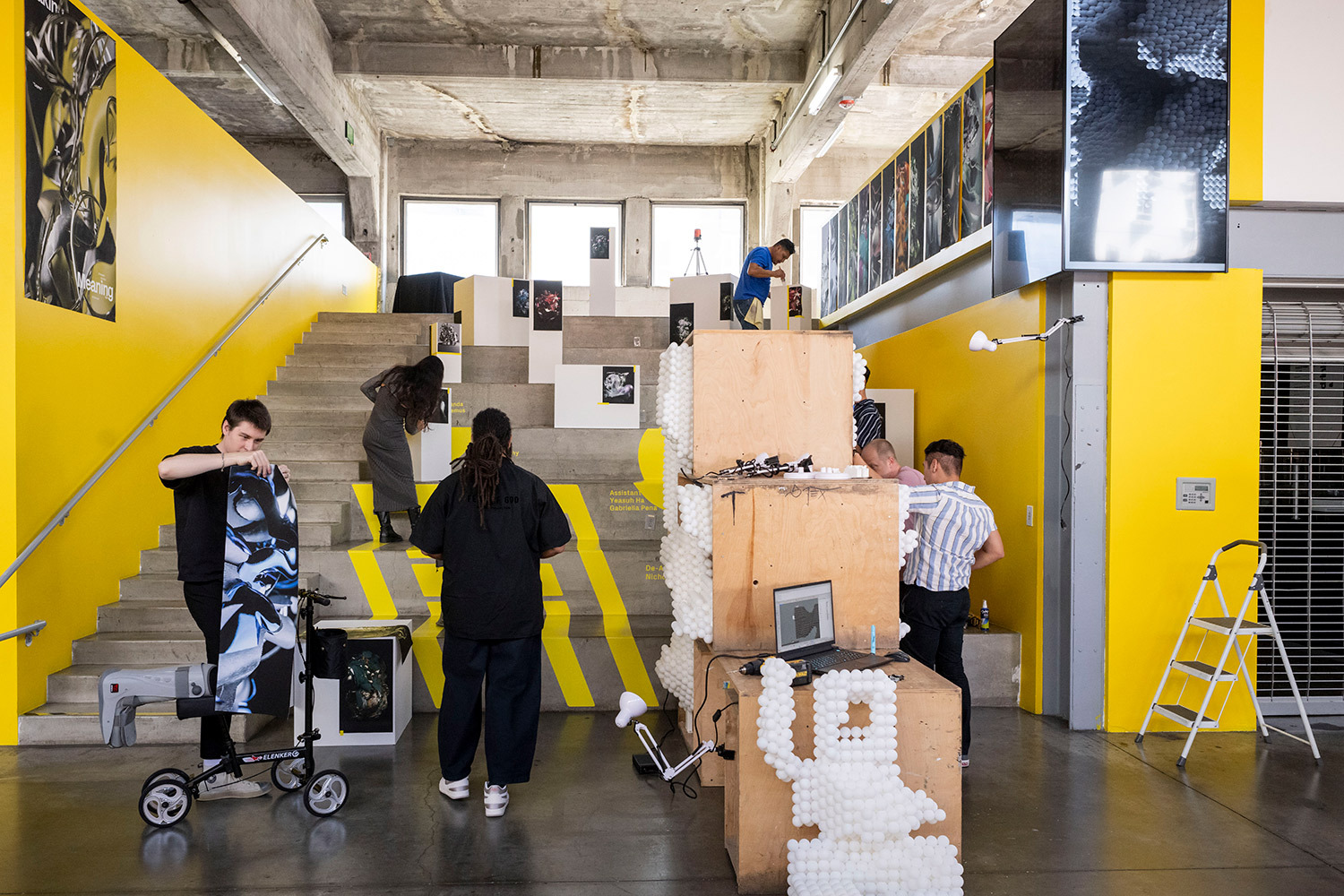M+M 2024’s “Layers” Ushers Program into New Territories of Design

SCI-Arc’s Making+Meaning four-week intensive summer program has once again pushed the boundaries of design and architectural thinking. The 2024 iteration of M+M, titled "Layers," was a testament to the school's commitment to fostering creativity and innovation among its participants. This year's program, led by M+M Coordinator William Virgil and Curime Batliner with assistance of Ian Fennimore, Yeasuh Ha, Gabriella Peña, and La’keem Timothy, focused on exploring the complexities of form and figure through a series of rigorous exercises that challenged students to think beyond traditional architectural paradigms.
Making+Meaning 2024 was organized into three main sections, each designed to build on the skills acquired throughout the program, ending with a final exhibition that showcased the students' impressive projects. These exercises helped them understand spatial arrangement and formal language, culminating in dynamic, cohesive assemblages while familiarizing themselves with industry-standard tools such as ZBrush, Rhino, and Grasshopper.
“Coming from a creative background helped, but I had no experience with Rhino 8, no experience with Grasshopper or even ZBrush, or Cinema 4D,” says DeAngela, another participant, recounting how approaching her creative work with new tools was one of the most rewarding elements of Making+Meaning.
“But I had to have this openness to be able to learn fresh ideas,” she continues. “And in that openness, it allowed me to see how I can then elevate the work that I already do through these different design techniques and strategies and softwares, which are now new ways or pathways to be able to project my art in larger forms and at larger scales.”
“Making+Meaning stands out among summer programs, offering a unique blend of creativity and innovation that inspires and intrigues,” explains Virgil. “This summer, our projects ranged from digital explorations to physical creations, each pushing the boundaries of traditional design.”
For his part, Batliner introduced students to the foundational concept that architecture and design are not just about creating buildings and objects, but the sets of instructions that are used to construct and realize them. This section of the program emphasized the role of the architect as the designer of a "machine"—a system of instructions, tools, and processes—that others often are layered on top of each other in the sequence of bringing a project to life.
“A key focus this year was on how computation influences not only the design process but also the simulation and execution of the project,” he says. “Through a series of hands-on exercises, analog experiments and digital sketches in Rhino-Grasshopper, students explored the integration of computational tools in drafting and communicating these instructions directly via augmented reality headsets for building instructions. This workflow established a tangible link and feedback loop between design intent and execution.”
The exhibition, during which students presented portfolio-ready work to peers, instructors, and visitors, presented a spectacular display of creativity, reflecting the imaginative thinking and making fostered throughout the program. From intricate digital sculptures to large-scale physical models, each piece showcased a unique perspective and innovative approach. The diversity of projects featured in the final exhibition highlighted the breadth of talent within the program, which was not only a celebration of the students' hard work but also a testament to the remarkable power of design education at SCI-Arc.
"In preparation [for Making+Meaning], I spent a lot of time considering how we could highlight the collaborative spirit of architecture—not only as a vessel for learning but also as a way for students to forge new friendships and explore fresh ideas,” Batliner adds. “Earning their trust, watching them form friendships, and witnessing how their ideas of what is possible evolved in just a matter of days speaks not only to the students' curiosity and playfulness but also to the success of the program. I had a lot of fun, and by the looks of it, so did the students.”
Of the sense of collaboration and community cultivated by the students and instructors over four weeks together, student Mariam says: “I’m so grateful for the people that I've met in Making+Meaning. Even though we don't all live in the same place, we've made such good connections. Anytime that I felt that I was limiting myself, they would encourage me to go for more and experiment and try new things.”
She concludes, “I would definitely say that the community here furthered my work and helped me improve as a person and as a designer.”
“Our students joined the program without knowing exactly what to expect,” Virgil notes. “They took a chance, and for many, it paid off beautifully. This year's cohort proved that risks can lead to extraordinary outcomes. Ultimately, their future is in their hands; our role is to keep showing up and showcasing our best.”
Making+Meaning 2024 demonstrated SCI-Arc's dedication to pushing the limits of architectural education. By challenging students to think critically and creatively, the program continues to cultivate the next generation of innovative designers. The success of this year's edition underscores the importance of fostering a diverse and dynamic learning environment, where students are encouraged to explore, experiment using new tools and techniques to redefine their own boundaries of design.
The culminating exhibition featured students' work, including collaborative projects, renders, and 3D prints—all from multiple different outputs. “But also in the gallery we'll have everyone come together, which is kind of one of my favorite parts; the culmination at the end where everyone invites their significant others or family,” explains M+M TA Yeasuh, “and then that's when it feels like everything has been finished.”
To learn more about Making+Meaning, including how to apply please visit the SCI-Arc Office of Admissions page here.








